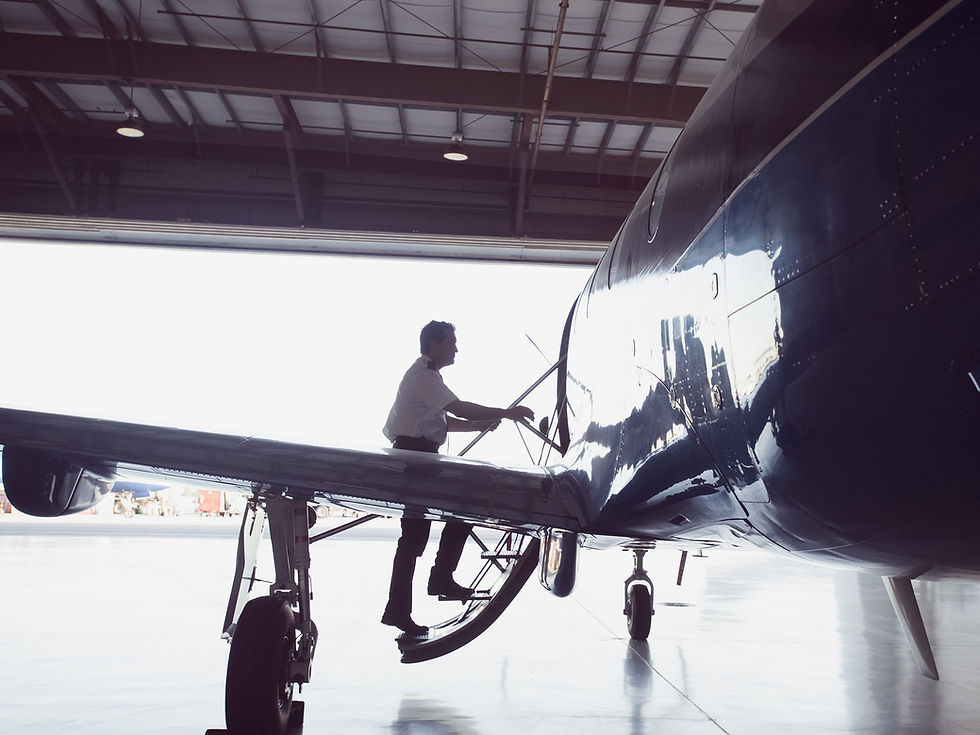Ensuring Safe Skies for All
- Flying High Again
- Jan 7, 2024
- 2 min read
Aviation has revolutionized the way we travel, connecting people across vast distances and opening up new frontiers for exploration. However, this remarkable form of transportation also carries inherent risks, emphasizing the paramount importance of aviation safety.
The aviation industry has a long and proud history of prioritizing safety, meticulously implementing robust safety protocols and embracing technological advancements to minimize risks and safeguard the well-being of passengers and crew. Let's delve into the key pillars that underpin aviation safety:

1. Relentless Training and Assessment:
Aviation safety is built on the foundation of comprehensive training and assessment. Pilots undergo rigorous training programs, covering theoretical knowledge, practical skills, and emergency procedures. Regular simulator training reinforces muscle memory and decision-making skills, ensuring pilots are prepared for any situation.
2. Strict Maintenance and Inspection:
Aircraft maintenance is a crucial aspect of aviation safety. Regular inspections identify and address potential faults or defects, ensuring that aircraft are in optimal condition for safe operation. Advanced maintenance techniques, such as predictive analytics, further enhance the ability to prevent mechanical failures.
3. Advanced Technology and Instrument Systems:
Technology plays a significant role in enhancing aviation safety. Navigation systems guide pilots with precision, weather radars provide real-time updates on meteorological conditions, and autopilot systems assist in maintaining steady flight during challenging conditions.
4. Effective Air Traffic Management:
Air traffic control (ATC) orchestrates the flow of air traffic, ensuring that aircraft operate safely and efficiently within controlled airspace. ATC systems rely on sophisticated radar, communication networks, and decision-support tools to maintain order and prevent collisions.
5. Transparent Investigations and Learning from Accidents:
The aviation industry adheres to a culture of open investigations and learning from accidents. When incidents occur, thorough investigations are conducted to identify root causes and implement corrective measures. This commitment to continuous improvement ensures that lessons learned from past accidents prevent future occurrences.
6. Passenger Involvement and Awareness:
Passengers play a vital role in aviation safety by following safety instructions, reporting any concerns, and cooperating with crew instructions during an emergency. Awareness of safety procedures and emergency exits enhances preparedness and helps minimize the impact of potential incidents.
7. Global Cooperation and Harmonization of Regulations:
Aviation safety is not solely the responsibility of individual countries or airlines; it requires global cooperation and harmonization of safety regulations. International organizations, such as the International Civil Aviation Organization (ICAO), establish standardized safety standards and procedures, ensuring consistent safety practices across borders.
8. Continuous Innovation and Technological Advancements:
The aviation industry is constantly innovating to enhance safety. Emerging technologies, such as artificial intelligence, big data analytics, and autonomous systems, hold the potential to further improve safety margins and reduce the risk of human error.
9. Investing in Human Factors and Crew Resource Management:
Human factors play a significant role in aviation safety. Crew Resource Management (CRM) training emphasizes effective communication, situational awareness, and decision-making skills, empowering crew members to work together effectively to mitigate risks and resolve emergencies.
10. Preserving the Aviation Culture of Safety:
Aviation safety culture is a cornerstone of the industry. It's an ongoing commitment to prioritizing safety at every level, from regulatory bodies to individual pilots and passengers. This culture fosters a mindset of vigilance, preparedness, and continuous improvement.

Aviation safety is a collective responsibility, requiring unwavering commitment from every stakeholder in the industry. By embracing these pillars of safety, we can ensure that the vast skies remain a safe haven for millions of passengers and crew members worldwide.
